How to Maintain Minimalism While Working from Home
Category: Lifestyle
Simplify Your Workspace, Simplify Your Life
Working from home offers flexibility and comfort, but it can also blur the lines between personal and professional spaces, leading to clutter and distraction. If you’ve found yourself struggling to keep your work area tidy and your mind focused amidst the chaos, you’re not alone. You’ve likely searched for practical ways to uphold minimalism — not just as a style choice but as a lifestyle that fosters clarity and productivity. Whether you’re new to minimalism or have dabbled in simplifying your life before, this guide dives deep into actionable strategies to maintain minimalism specifically within your home office or work zone.
This post goes beyond the generic advice of decluttering and dives into the nuances of working remotely in a way that supports your minimalist goals. It’s tailored for individuals who seek clear, manageable steps to create an inspiring yet distraction-free space. You’ll discover how minimalism can help you sharpen your focus, reduce stress, and create a balanced environment conducive to both work and well-being. Ready to transform your work-from-home experience into one that’s streamlined and intentional? Keep reading to learn how to embrace simplicity effectively in your daily routine and surroundings.
- Simplify Your Workspace, Simplify Your Life
- Designing a Minimalist Workspace: Choosing Functional, Quality Furniture and Essentials
- Decluttering Regularly: Establishing Easy Routines to Maintain a Minimalist Work Area
- Digital Minimalism for Work from Home: Organizing Your Files, Emails, and Apps to Reduce Digital Noise
- Prioritizing Multi-Functional Tools and Equipment: Save Space and Money with Versatile Essentials
- Establishing Boundaries to Maintain Simplicity: Creating Clear Work Hours and Physical Boundaries
- Incorporating Mindful Practices: Enhance Mental Clarity and Minimize Overwhelm
- Streamlining Workflow and Task Management: Embracing Minimalist Productivity
- Personalizing Minimalism: Adapting Minimalist Principles to Fit Your Personality and Work Style
- Maintaining Minimalism Amid Changing Needs: Flexibly Adjusting Your Minimalist Setup to Accommodate Evolving Work Demands and Priorities
Designing a Minimalist Workspace: Choosing Functional, Quality Furniture and Essentials
Creating a minimalist workspace begins with intentional choices in furniture and tools that prioritize function over form, helping you maintain focus and reduce mental clutter. Instead of overcrowding your desk with unnecessary items, invest in a few high-quality, versatile pieces that support your daily tasks while complementing the minimalist aesthetic. For example, select a sturdy desk with clean lines and enough surface area to accommodate your computer and essential tools, but avoid oversized workstations that encourage piling up clutter.
When it comes to seating, a comfortable, ergonomically designed chair is essential—not only for physical well-being but also for sustaining productivity in a clutter-free environment. Keep only the desk essentials within arm’s reach: a slim laptop or monitor, a wireless keyboard and mouse, a notebook or planner, and perhaps a minimalist desk lamp for proper lighting. Investing in multi-purpose storage solutions like sleek drawers or floating shelves can help you organize papers and supplies away from sight, maintaining a crisp, distraction-free surface. By consciously choosing functional, durable, and multi-use furniture and essentials, you ensure your workspace remains a sanctuary for focus and creativity without the overwhelm of excess.
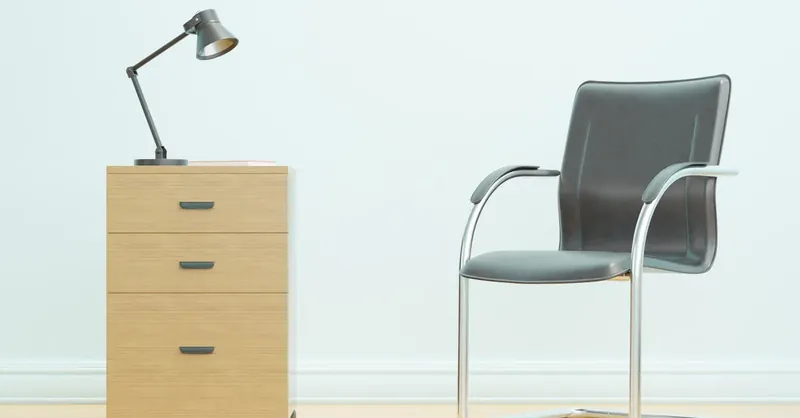
Image courtesy of dada _design
Decluttering Regularly: Establishing Easy Routines to Maintain a Minimalist Work Area
Maintaining a minimalist workspace requires more than just an initial tidy-up; it demands consistent, manageable decluttering habits that prevent unnecessary items from accumulating. By establishing a simple daily or weekly routine, you can keep your work area free from distractions and cultivate an environment that supports sustained focus and productivity. Start by designating a brief period—five to ten minutes at the end of each workday—to clear your desk surface and organize any papers or tools used throughout the day. This small habit, repeated regularly, stops clutter buildup and reinforces a clear mental space.
In addition to daily tidying, consider adopting these easy decluttering strategies:
- The One-In-One-Out Rule: For every new item you bring into your workspace, remove one unnecessary or outdated item to maintain balance and prevent overflow.
- Use Sorting Zones: Create categorized baskets or trays labeled ‘To File,’ ‘To Discard,’ and ‘To Address Later.’ This keeps papers and small items contained and prevents piles from forming.
- Digital Declutter: Regularly clean up your desktop files and email inbox to complement the physical minimalism in your workspace, reducing cognitive load.
By embedding these routines into your work-from-home lifestyle, you ensure your minimalist goals are not just a one-time effort but an ongoing commitment to functional simplicity. Regular decluttering enhances your ability to concentrate, reduces stress, and transforms your workspace into an inviting, efficient oasis tailored to your professional and personal well-being.
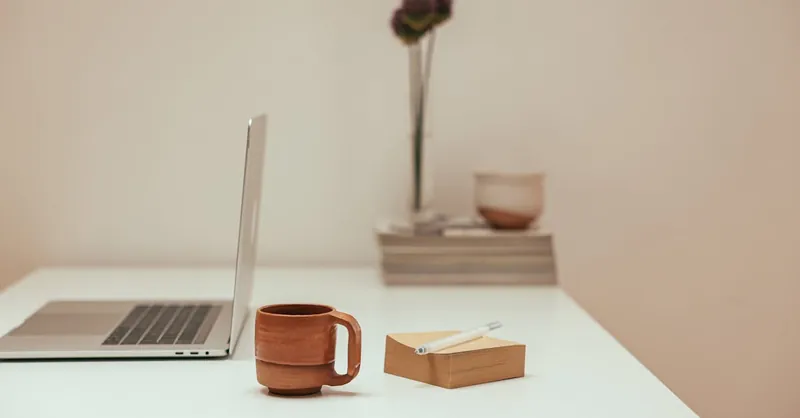
Image courtesy of Cup of Couple
Digital Minimalism for Work from Home: Organizing Your Files, Emails, and Apps to Reduce Digital Noise
Embracing digital minimalism is essential for maintaining a focused, productive work-from-home environment. Just as a cluttered physical workspace can overwhelm your senses, a disorganized digital landscape introduces constant distractions and mental fatigue. To reduce digital noise and boost your concentration, start by streamlining your digital files, emails, and applications with intentional organization and thoughtful curation.
First, tackle your digital files by creating a clear, hierarchical folder structure that mirrors your projects and priorities. Group related documents and assets into categorized folders with intuitive labels, then archive or delete outdated files regularly to avoid unnecessary accumulation. Next, manage your email inbox by using filtering tools, folders, or labels to immediately sort incoming messages—this prevents your inbox from becoming an overwhelming task list. Unsubscribe from irrelevant newsletters and mute non-essential notifications to minimize interruptions throughout your day.
Finally, evaluate the apps and software you use daily and remove any that don’t directly contribute to your productivity or well-being. Limit your workspace to a handful of essential, streamlined tools that help you execute tasks efficiently rather than scatter your focus. Consider using minimalist productivity apps that combine multiple functions, such as note-taking, task management, and calendar, into a single interface to reduce app fatigue.
By simplifying your digital environment with these strategies, you create a seamless, distraction-free zone that enhances your ability to focus deeply and work intentionally—key principles of minimalism that cultivate calm and clarity in your remote work life.
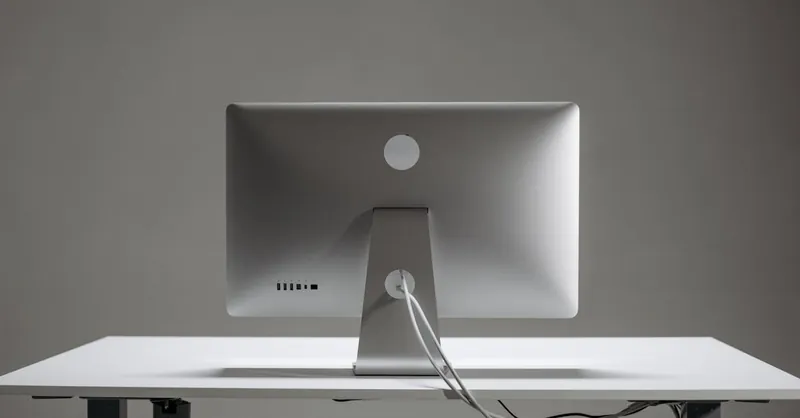
Image courtesy of Pavel Danilyuk
Prioritizing Multi-Functional Tools and Equipment: Save Space and Money with Versatile Essentials
Embracing minimalism while working from home means making every item count—especially when it comes to your tools and equipment. Instead of accumulating single-purpose gadgets that crowd your workspace and drain your budget, focus on investing in multi-functional tools that streamline tasks and eliminate unnecessary clutter. Multi-functional equipment not only helps you save precious desk and storage space but also reduces decision fatigue by simplifying what you need to manage daily.
When selecting your work-from-home essentials, consider these strategies for prioritizing multi-functionality:
- Choose All-in-One Devices: For example, a printer that scans, copies, and faxes or a docking station that charges devices while expanding connectivity options reduces the need for several separate gadgets.
- Opt for Convertible Furniture and Accessories: Adjustable desks that double as standing or sitting stations, or storage units that can also act as seating, bring flexibility without additional bulk.
- Select Digital Tools with Multiple Features: Apps or software that combine note-taking, task management, and communication cut down on app overload and digital distractions.
- Limit Desk Tools to Essentials with Dual Purposes: A pen with a stylus tip, a notebook with integrated task lists, or a USB hub that consolidates power and data transfer are examples of smart choices that keep your space uncluttered.
By investing in versatile, high-quality tools and equipment, you create a workspace that reflects minimalist ideals—functionality paired with simplicity. This approach not only maximizes your physical space but also aligns your environmental and financial mindset with your minimalist goals, encouraging mindful consumption and intentional living in every aspect of your remote work environment.
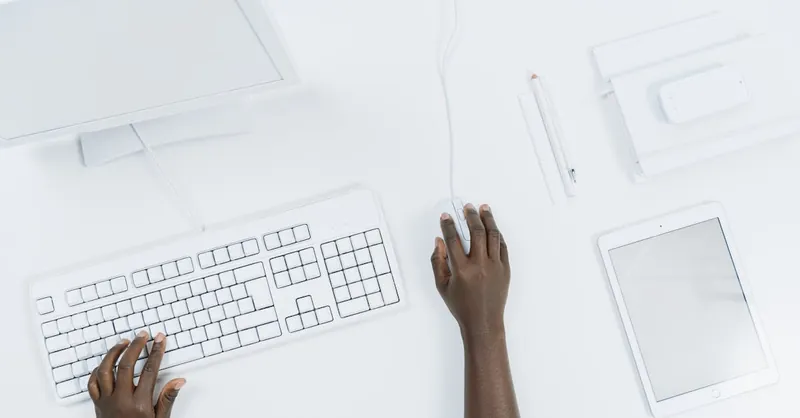
Image courtesy of cottonbro studio
Establishing Boundaries to Maintain Simplicity: Creating Clear Work Hours and Physical Boundaries
A key principle of minimalism while working from home is cultivating clear boundaries that separate your professional tasks from personal life. Without these boundaries, the lines between work and relaxation blur, increasing stress and clutter both mentally and physically. To maintain simplicity and sustain productivity, it’s essential to define explicit work hours and establish dedicated physical zones that signal when you are "on" and "off" work.
Start by setting a consistent schedule that mirrors your natural rhythms and commitments. Define your start and end times for work like you would in an office setting, communicating these hours clearly to colleagues, family, or housemates. This helps create a psychological boundary and reduces the temptation to let work spill into every waking moment. Additionally, incorporate intentional breaks within your schedule to reset and avoid burnout, reinforcing a balanced routine.
Physically separating your workspace from personal areas—whether it’s a dedicated room, a corner with a screen divider, or a minimalist desk that is put away after hours—enhances these boundaries further. When your work zone is clearly designated and kept free of non-work items, it helps your mind associate the space with focus and productivity. Conversely, closing or clearing this space at the end of the day signals to your brain that it’s time to switch off and recharge.
To establish effective boundaries, remember to:
- Define and adhere to specific work hours daily. Use alarms or calendar reminders to stick to this schedule.
- Create a physical workspace that can be closed off or tidied away, reinforcing the division between work and home life.
- Communicate your availability and boundaries with family and colleagues to minimize interruptions during work hours.
- Avoid checking email or work-related tasks outside of your set schedule to protect your downtime and mental clarity.
By consciously cultivating these temporal and spatial boundaries, you protect your minimalist work environment from becoming overwhelmed while enhancing your ability to focus deeply during work and relax fully afterward—cornerstones of a simplified, intentional remote work lifestyle.
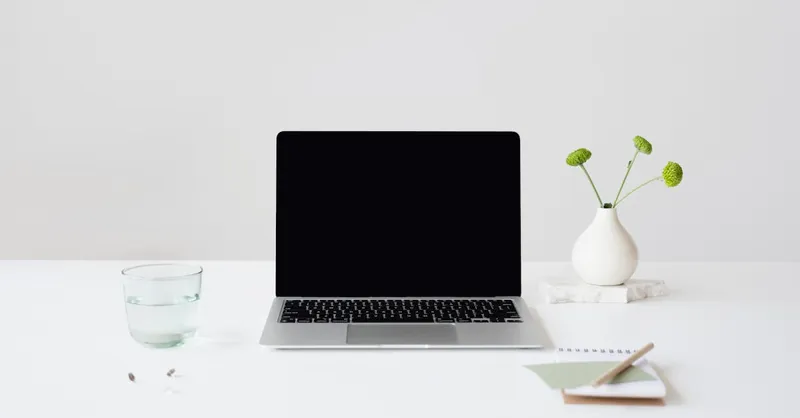
Image courtesy of Hanna Pad
Incorporating Mindful Practices: Enhance Mental Clarity and Minimize Overwhelm
Maintaining minimalism while working from home extends beyond physical spaces; it deeply involves cultivating mental clarity through intentional, mindful practices. Incorporating techniques such as meditation, breathing exercises, and scheduled breaks helps reduce stress and prevent overwhelm—a common challenge when balancing work and life in the same environment. These practices support a calm, focused mindset that aligns with minimalist values, enabling you to work more efficiently and sustain a balanced, simplified lifestyle.
Meditation and Breathing Exercises for Focus and Calm
Starting or ending your workday with a brief meditation session encourages present-moment awareness and improves your ability to concentrate on tasks without distraction. Even five minutes of mindfulness meditation can soothe a busy mind, reduce anxiety, and promote a sense of control over your daily work routine. Complement meditation with simple breathing exercises like box breathing or deep diaphragmatic breaths to quickly release tension during moments of stress. These practices are a powerful, natural way to clear mental clutter and foster sustainable productivity.
Scheduled Breaks to Prevent Burnout and Recenter Attention
Integrate regular, intentional breaks into your work schedule to refresh your mind and prevent cognitive overload. Techniques such as the Pomodoro method—working in focused intervals of 25 minutes followed by a 5-minute pause—encourage recurring moments of rest that keep your energy sustainable. Use breaks to stretch, hydrate, or practice a quick breathing exercise, reinforcing the minimalist goal of purposeful downtime that enhances both mental and physical well-being.
Key mindful practices to integrate daily:
- Begin or end work with short meditation sessions to cultivate focus.
- Use deep breathing exercises during work to release stress promptly.
- Schedule frequent breaks following techniques like Pomodoro to maintain clarity.
- Treat breaks as non-negotiable appointments to protect your mental space.
By embedding these mindful rituals into your work-from-home routine, you create a mental minimalist environment that reduces overwhelm and sharpens your focus. This balanced approach not only maximizes your work efficiency but also nurtures a deeper sense of calm and intentional living—essential elements for sustaining minimalism in both your professional and personal life.

Image courtesy of Photo By: Kaboompics.com
Streamlining Workflow and Task Management: Embracing Minimalist Productivity
Maintaining minimalism while working from home extends beyond physical organization to how you manage your workflow and daily tasks. Employing minimalist productivity techniques such as batching, prioritization, and simple to-do lists helps you focus on what truly matters, reduce decision fatigue, and create a more intentional work rhythm—all essential for a clear, streamlined remote work experience.
Task Batching for Focused Efficiency
Task batching involves grouping similar tasks together and dedicating specific time blocks to complete them without interruption. Instead of constantly switching between diverse activities—which can fragment your focus and increase mental clutter—batching allows you to minimize distractions and improve deep work. For example, reserve a specific hour for answering emails, another for creative brainstorming or writing, and yet another for administrative duties. This technique reduces the cognitive load of task switching and fosters a minimalist approach to your workload by processing related tasks collectively.
Prioritization: Focus on What Truly Matters
Adopt a clear system of prioritizing your daily and weekly tasks to avoid overwhelm and ensure your energy targets the most important activities. Start each day by identifying your top three priorities—the tasks that will drive the most impact or progress. Using frameworks such as the Eisenhower Matrix or the Pareto Principle (80/20 rule) helps you differentiate urgent from important and allocate your time accordingly. This laser focus prevents your to-do list from becoming a source of stress and clutter, reinforcing minimalist values by doing less, but better.
Keeping To-Do Lists Simple and Intentional
Instead of complex project management apps overloaded with features, minimalist task management favors simple, clear to-do lists—whether analog or digital—that capture your commitments without distraction. A handwritten list or a straightforward app that allows you to easily add, check off, and reorder tasks work well here. Group your tasks by category or time frame, but keep the layout clean and devoid of unnecessary details. This simplicity not only helps you track progress but also instills a sense of accomplishment and clarity, reducing overwhelm and supporting your minimalist lifestyle.
By integrating these straightforward yet powerful strategies— - Batching similar tasks, - Prioritizing high-impact work, and - Maintaining clean, simple to-do lists
—you cultivate a productivity system that complements your minimalist workspace. This holistic approach ensures your work-from-home routine remains intentional, efficient, and free from excess mental clutter, allowing you to embrace minimalism in both your environment and your workflow.
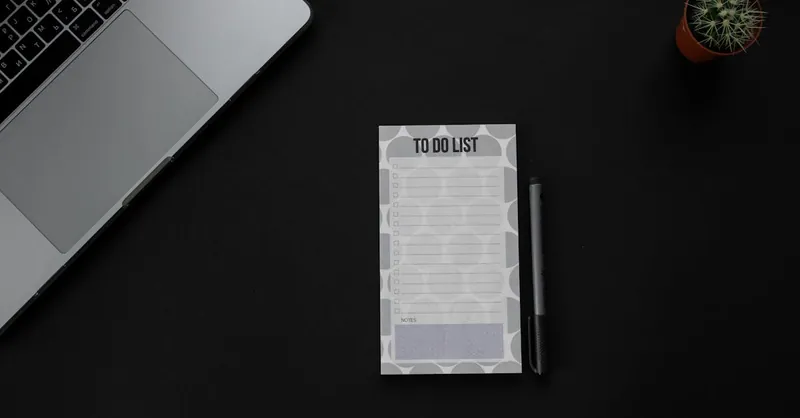
Image courtesy of KATRIN BOLOVTSOVA
Personalizing Minimalism: Adapting Minimalist Principles to Fit Your Personality and Work Style
Embracing minimalism while working from home doesn’t mean rigidly following a one-size-fits-all formula. Personalizing minimalism ensures your workspace and routines align with your unique personality and work style, making the minimalist lifestyle both sustainable and enjoyable. Rather than enforcing strict constraints that might feel restrictive, adapting minimalist principles allows flexibility while maintaining clarity, focus, and simplicity.
Start by identifying what environments and setups truly boost your productivity and creativity. For instance, some individuals thrive better in an ultra-clean space with only bare essentials, while others find a few personal touches—such as a plant, an inspiring artwork, or a favorite mug—help maintain motivation and reduce stress. Minimalism doesn’t require eliminating all personality or warmth; it encourages intentional choices, keeping only what adds value or joy to your workspace. Similarly, your work style—whether structured and routine-based, or fluid and spontaneous—should inform how you organize your tasks and space. If you need visual reminders, consider minimal, clutter-free boards or digital notes that avoid overwhelming your senses.
To avoid rigidity, experiment with these personalization strategies:
- Incorporate meaningful objects: Choose a small number of items that inspire you, such as a family photo or a subtle piece of décor that uplifts your mood without adding clutter.
- Tailor decluttering frequency: Some thrive with weekly cleanses; others prefer quick daily tidies—find the rhythm that fits your lifestyle.
- Customize your digital layout: Adjust app arrangements and notification settings to match your focus patterns rather than adhere to preset defaults.
- Balance aesthetics and function: Prioritize items that serve a purpose but also reflect your taste to create a workspace that invites you in each day.
By adapting minimalism to your personal preferences, you sustain motivation and reduce resistance to maintaining a minimalist work environment. This personalized approach not only enhances comfort and productivity but also respects the core minimalist goal of simplifying life in a way that truly fits you, avoiding unnecessary rigidity while embracing meaningful simplicity.
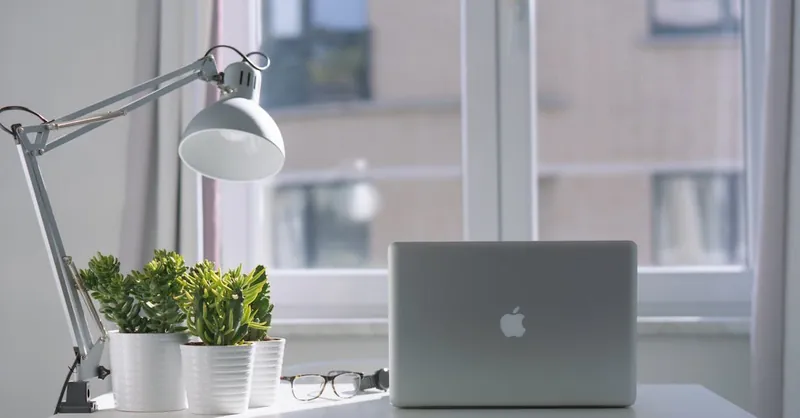
Image courtesy of Daan Stevens
Maintaining Minimalism Amid Changing Needs: Flexibly Adjusting Your Minimalist Setup to Accommodate Evolving Work Demands and Priorities
One of the essential yet often overlooked principles of maintaining minimalism while working from home is embracing flexibility within your minimalist setup. As your work demands and priorities evolve—whether due to shifting projects, new technology, or changes in your role—your workspace and routines should adapt without losing the core minimalist focus on simplicity and intentionality. Stagnant setups risk becoming cluttered or inefficient, whereas a flexible minimalist environment honors the dynamic nature of remote work while sustaining clarity and focus.
To maintain minimalism amid changing needs, consider these strategies:
- Regularly reassess your workspace essentials: Periodically review which tools, furniture, or digital resources are still serving you well and which ones are no longer necessary. Remove or replace items that no longer align with your current workflow or add value.
- Implement modular and mobile solutions: Choose furniture and storage that can be easily reconfigured or moved, such as rolling carts, adjustable desks, or stackable organizers. This flexibility lets you optimize your space for different tasks or work modes, from deep focus to virtual meetings.
- Adjust your digital ecosystem as priorities shift: Stay vigilant about digital minimalism by updating your apps, workflows, and file organization to reflect current projects and communication channels. Archive outdated files and deactivate apps that no longer support your productivity goals.
- Create adaptable routines: As your workload changes, modify your decluttering habits, task batching, or boundary-setting practices to meet new demands while preserving simplicity. For example, during busy periods, you might prioritize rapid tidying methods or focus exclusively on high-impact tasks.
By flexibly adjusting your minimalist workspace and habits, you ensure that minimalism remains a supportive, living practice rather than a rigid rule. This approach allows you to respond effectively to evolving work challenges while maintaining an environment free from excess, distractions, and overwhelm. Embracing flexibility within minimalism ultimately leads to a sustainable work-from-home lifestyle that aligns with your current priorities and nurtures continued clarity, focus, and well-being.
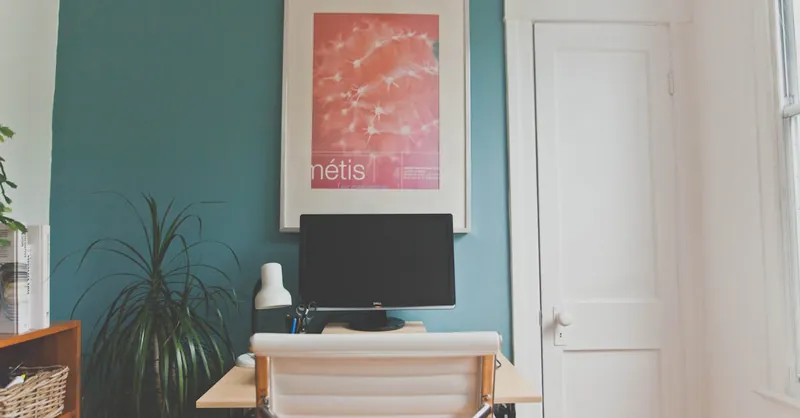
Image courtesy of Pixabay
